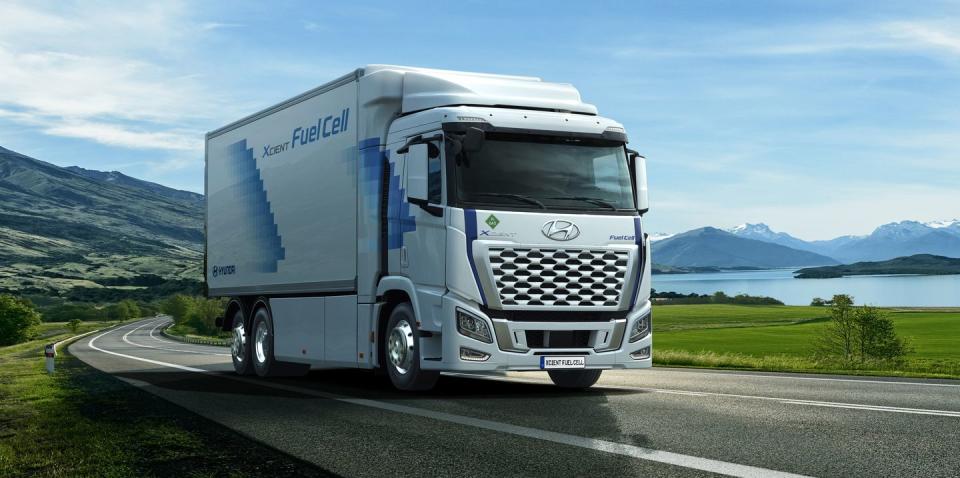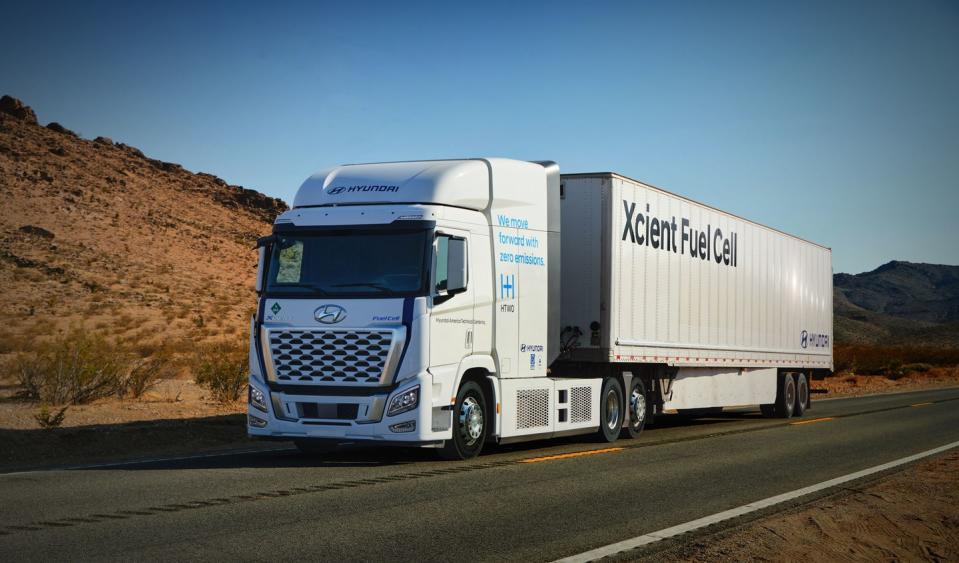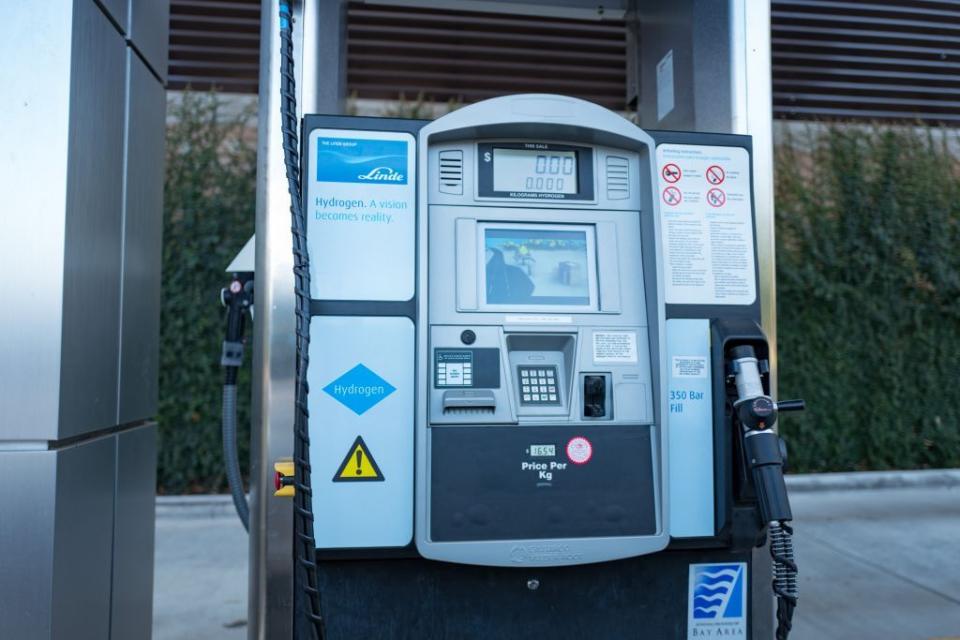Hyundai's XCIENT Truck Will Help EPA Hydrogen Transport Project

Teaming up with a local California Air Quality District, Hyundai will build five hydrogen-electric big rigs to transport liquified hydrogen across California.
Specifically, the trucks will serve as contractors for First Element Fuel, the largest hydrogen refueling operator in the US, before going into general commercial service.
This project will be funded to the tune of $3.5 million through the EPA's Targeted Airshed Grant program, which seeks to reduce emissions from primary sources in over-congested areas.
As part of the Environmental Protection Agency's Targeted Airshed Grant (TAG) program, a two-company partnership between South Coast Air Quality Management District and Hyundai has been approved for a $3.5 million grant in the name of hydrogen transportation. Specifically, the South Coast AQMD has enlisted the help of Hyundai in building five 6x4 XCIENT Fuel-Cell trucks to transport liquified hydrogen to refueling stations operated by leading US hydrogen operator First Element Fuel. Once built and running, these commercial trucks will deliver liquid hydrogen to specific refueling stations for five years before a mandated four years of traditional commercial service.
This announcement builds on the NorCal Zero Project, which is aimed at testing zero-emissions commercial driving with 30 Class-8 XCIENT Fuel-Cell electric trucks deploying in California. While the NorCal Zero Project is set to start early in 2023, a number of the XCIENT trucks are already on the road today. After deploying 47 trucks in Switzerland, the hydrogen-electric tractor trailers have accumulated over four million kilometers of driving as of this summer. Most recently, Hyundai announced that a handful of German logistics companies have employed 27 XCIENT models thanks to backing from Germany’s Federal Ministry for Digital and Transport.

Hyundai will build the TAG program trucks with hydrogen delivery in mind. The model itself will run off a 180-kW fuel-cell system augmented by a 350-kW electric motor. With an estimated range of 450 miles, the XCIENT's personal tank can hold up to 147 pounds of hydrogen with a gross combined weight of 82,011 pounds. That's a lot of weight to pull but the electric motor producing 1649 lb-ft of torque should be able to handle the towing task.
The TAG program works to reduce air pollution in areas with the highest levels of damaging particulate matter by funding projects that either reduce emission levels from the primary producers or support National Ambient Air Quality Standards in particularly affected areas. The caveat for automakers like Hyundai is that only state or local air-pollution control agencies are eligible to apply, meaning these organizations must partner with manufacturers to complete initiatives like this. It's no surprise that Hyundai was picked for this task, considering its significant push toward electrification in the American market, including with previous hydrogen powertrains.

“We are happy to deploy our XCIENT Fuel-Cell trucks in California, especially since this will help local stakeholders to decarbonize the hydrogen supply chain itself by substituting conventional trucks—which have been used to haul hydrogen—to hydrogen trucks," said Mark Freymueller, senior vice president and head of Commercial Vehicle Business Innovation of Hyundai Motor.
Commercial driving has been identified as a significant source of pollution, and manufacturers are scrambling to create cleaner versions of these necessary vehicles. In Europe, Stellantis has launched a fleet of small hydrogen vans for inner-city work, though it's unlikely these will come to the US. Mercedes has pieced together electric garbage trucks, and even Toyota is set to produce a hydrogen big rig. As the demand for clean commercial vehicles grows, it's likely the choice will come down to which propulsion style becomes the more subsidized option with better infrastructure. Until then, manufacturers will continue to experiment with both options.
Are you hopeful about hydrogen's place in a transportation market pushing toward zero-emission vehicles? Please comment below.

 Yahoo Autos
Yahoo Autos 